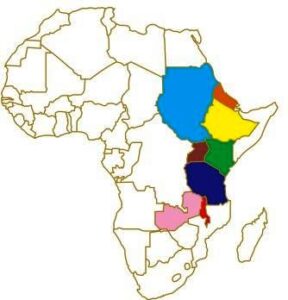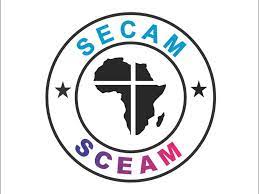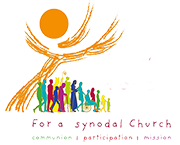TANZANIA: TEC Conducts a Synodal Liturgical Forum to Mark 60 Years of Sacrosanctum Concilium

TEC
Sarah Pelaji
The Catholic Church in Tanzania has organized a liturgical forum to celebrate the 60th anniversary of the Second Vatican Council’s Constitution on the Sacred Liturgy, entitled Sacrosanctum Concilium.
The Liturgical Synodal Forum held at the Catholic Secretariat-Kurasini from Monday, July 31, to Friday, August 4, brought together more than 200 participants including clergy, Religious and laity from all 34 dioceses of Tanzania in order to evaluate together how the document has been implemented in the country.
Bishop Simon Masondole of Bunda Catholic Diocese and Chair of the Liturgical Committee/department said the aim of the forum was to look at how the document has been implemented and the role parishioners can play in bringing the liturgy to life.
The Sacrosanctum Concilium was the first of the Constitutions to be passed by the Second Vatican Council. The keynote is to look at what the Council was asking for in its liturgical reforms and for the Church in Tanzania to ask herself, ‘How have we responded to that’?”
The conference will also conduct a range of workshops for its faithful across the dioceses in different aspects of liturgical practice,” Bishop Masondole explained.
He said that following the Council, which ended in 1965, a Concilium was set up to look at the reform of the liturgical books or rites. “How have the reforms from the Council been implemented?” He asked.
“But the question is how we have actually implemented the reforms, and the truth is that that implementation is a progress because liturgy is a living thing, it’s enacted every day in every parish.” He continued.
So, the reform of the liturgical rites was completed about 40 years ago, but we are still in liturgical renewal and as we celebrate this anniversary, it is a good time to look at how those reformed rites are being celebrated according to the principles of the Council,” He noted while adding that;
The Forum aimed particularly at people who are actively engaged in liturgical ministry in their parishes which Clergies, Religious and Laity are involved.
He explained further that, the document provides guidance on the liturgy and its celebrations.
Also, the document came with various changes including encouraging active and positive participation in singing, praying, appearance etc. but also the liturgy of the Holy Mass was improved by involving the laity as well as changing the appearance of the altar where the priest was now required to celebrate mass by looking at the believers instead of turning their backs on them.
Other changes include sacred music where songs from other nations and communities were welcomed and allowing sacred art to be used in the construction and carving of churches.
Chapters one to three of the Document, emphasizes more that the liturgy is for the glory of God in the Holy Trinity, God the Father being the first person, God the Son the Second Person and the Holy Spirit the Third Person where also it is emphasized that there must be a place to celebrate the Liturgy where it doesn’t even have to be a church.
The Fathers of the Council teach that the Liturgy must provide answers to the needs of the people and quench the thirst and hunger for knowing the Word of God.
“The document allows culture, sacred music, but here now let’s ask ourselves, does our liturgy today quench hunger and thirst?” How about a group of miracle seekers?
Can we ask ourselves how our Sacrament of Anointing of the sick meets today’s needs? If the answer is yes, why do our people go for miracles in other churches for cure? Do the prayers contained in the specific liturgy of the Church meet the needs of our people today?
We need to be awake with the emergence of various groups within our Church,” he said.
In his topic on the Meaning and Origin of Liturgy and Theology (Lex orandi/ Lex credenda), the Executive Secretary of the TEC Liturgical Department, Father Clement Kihiyo insisted on the respect of the basis of the Catholic faith. So, he advised the Church to reflect on itself every time by looking at where its celebrations have affected faith and see if these effects are constructive or destructive.
“What’s more is that liturgy and theology must be based on the Holy Scriptures, since it is the only principle of faith and worship that does not make mistakes,” he said.
A theologian Father Titus Amigu in his topic of Sacrosanctum Concilium in the Holy Bible gave attention to the Catholic Church that despite the Church allowing culture on the whole issue of evangelization and allowing various apostolic associations to be established, more attention is needed to enable the Church to remain on its foundations instead of being ruled by traditions from other faith.
“The teachings of the Catholic Church are clear, the books of Church teachings and liturgy are there, including the Missal of the Altar and even song guides. But I don’t know what our believers want to be fed to the extent that some of them run elsewhere claiming to seek miracles and get rid of demons…
In making the evaluation, despite the participants identifying the achievements achieved within the period of 60 years of the Document, they also made clear some things that are not implemented properly and those that go against the instructions of the document.
Therefore, several recommendations have been made which, however, in order for their implementation they need the approval of the Bishops in the country.
Bishop Masondole has allowed believers to hold hands during wishing each other the sign of peace and put Holy water at the Church entrance as it was before Covid 19.
For the position given to me by the bishops as the Chairman of the Liturgy Department, I now order two things to be implemented immediately… the first is to restore the order of holding hands during the celebration of the Holy Mass as well as to restore the order of placing the blessed water at the doors of the Church and its implementation must to start immediately …God will take care of us, the Corona shall not return,” he said.


